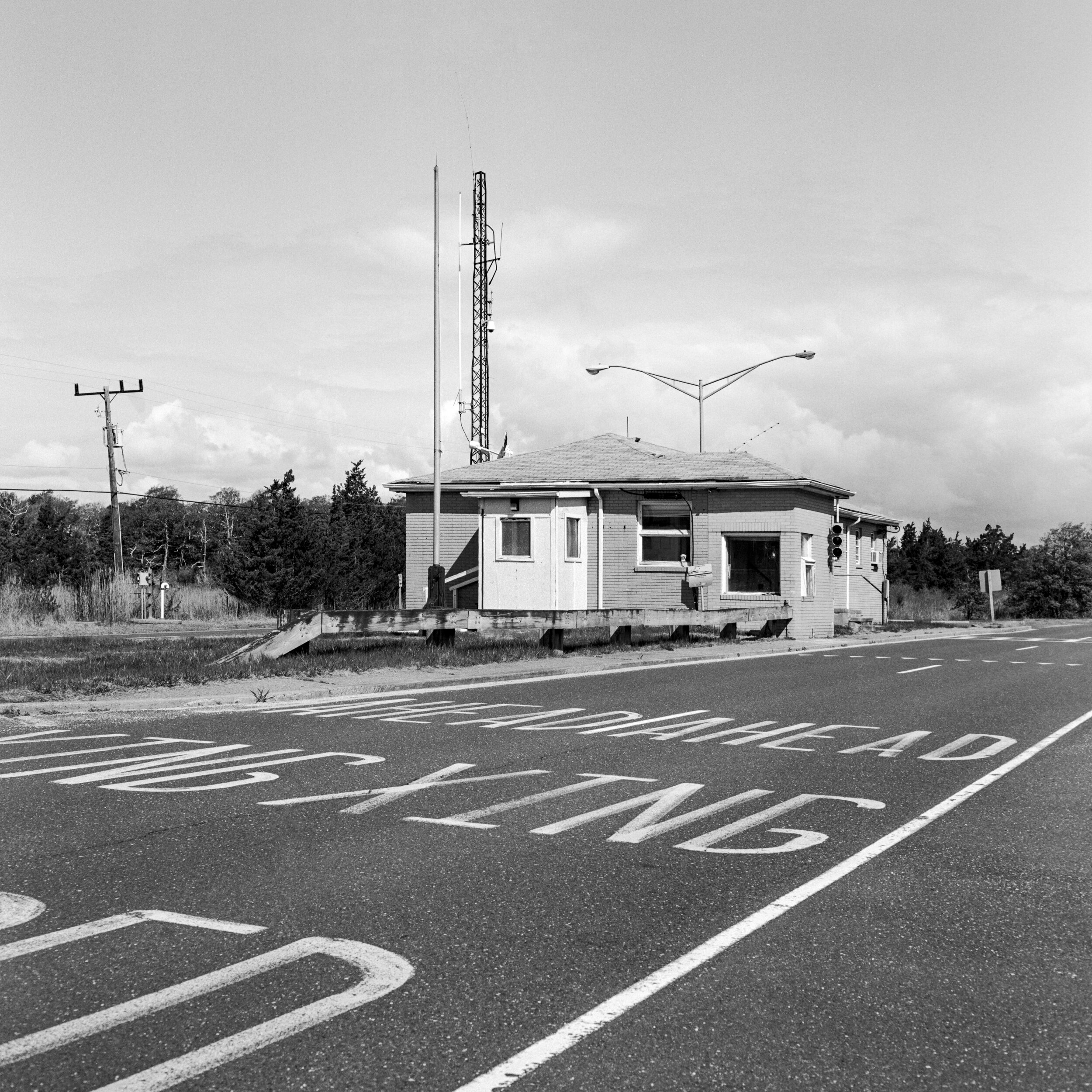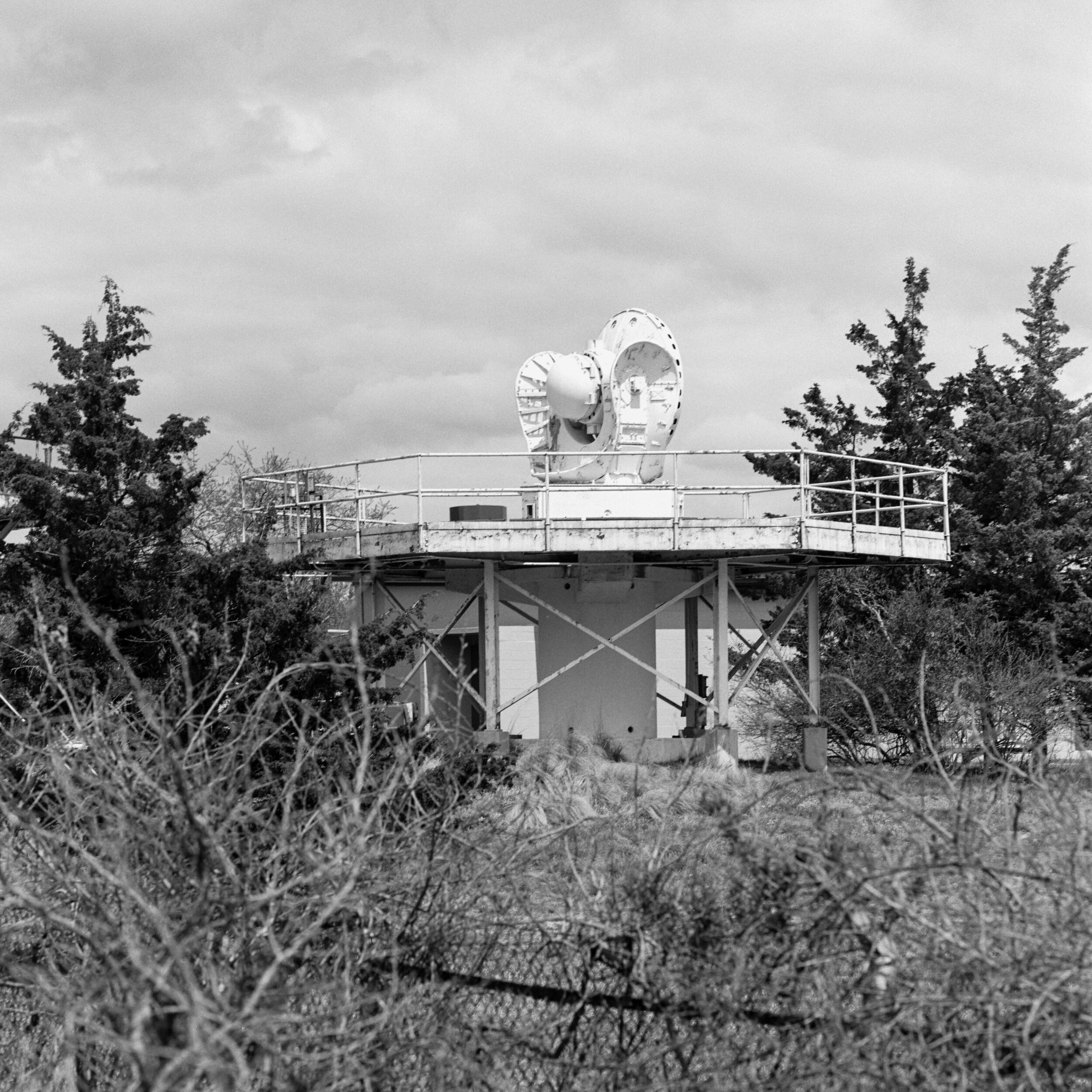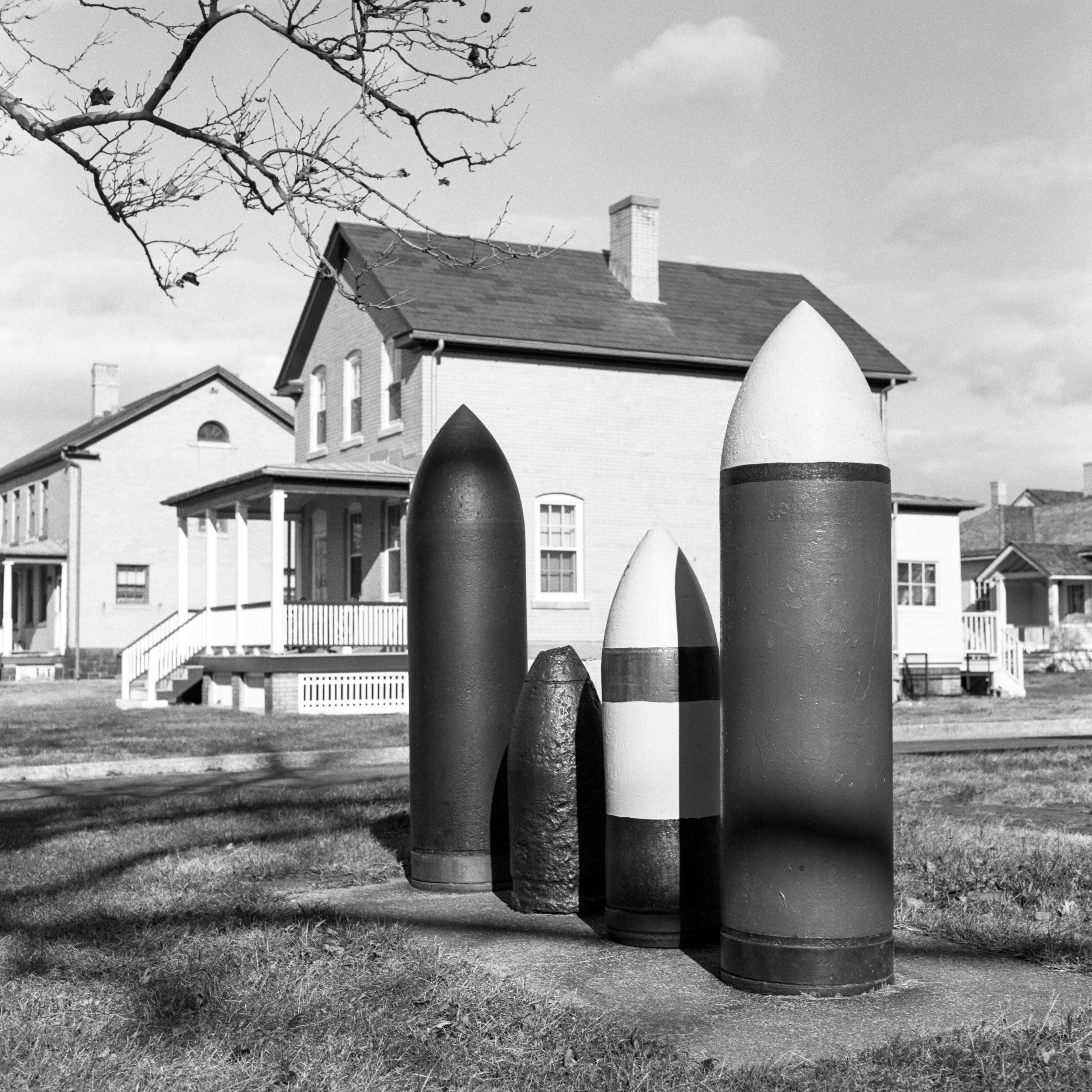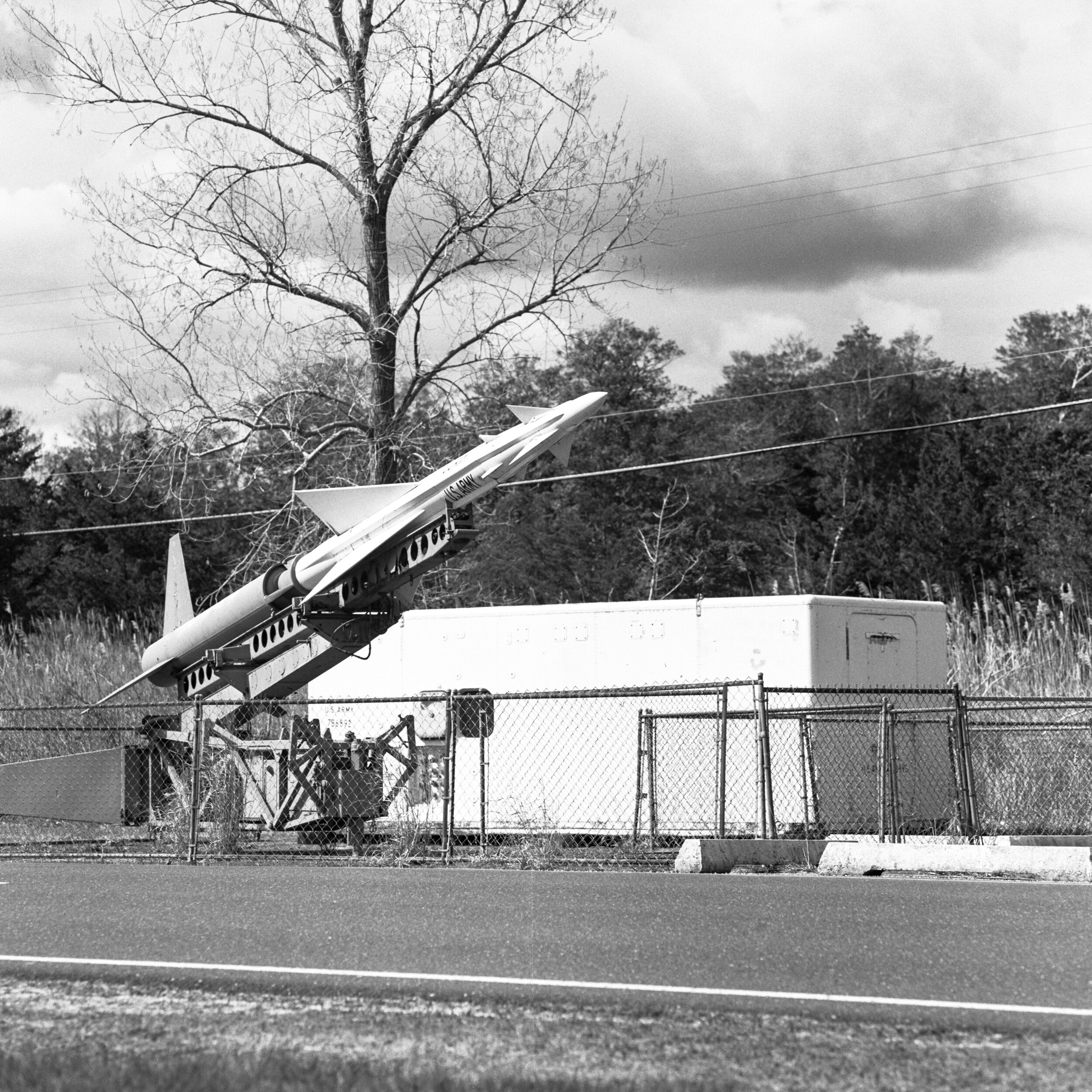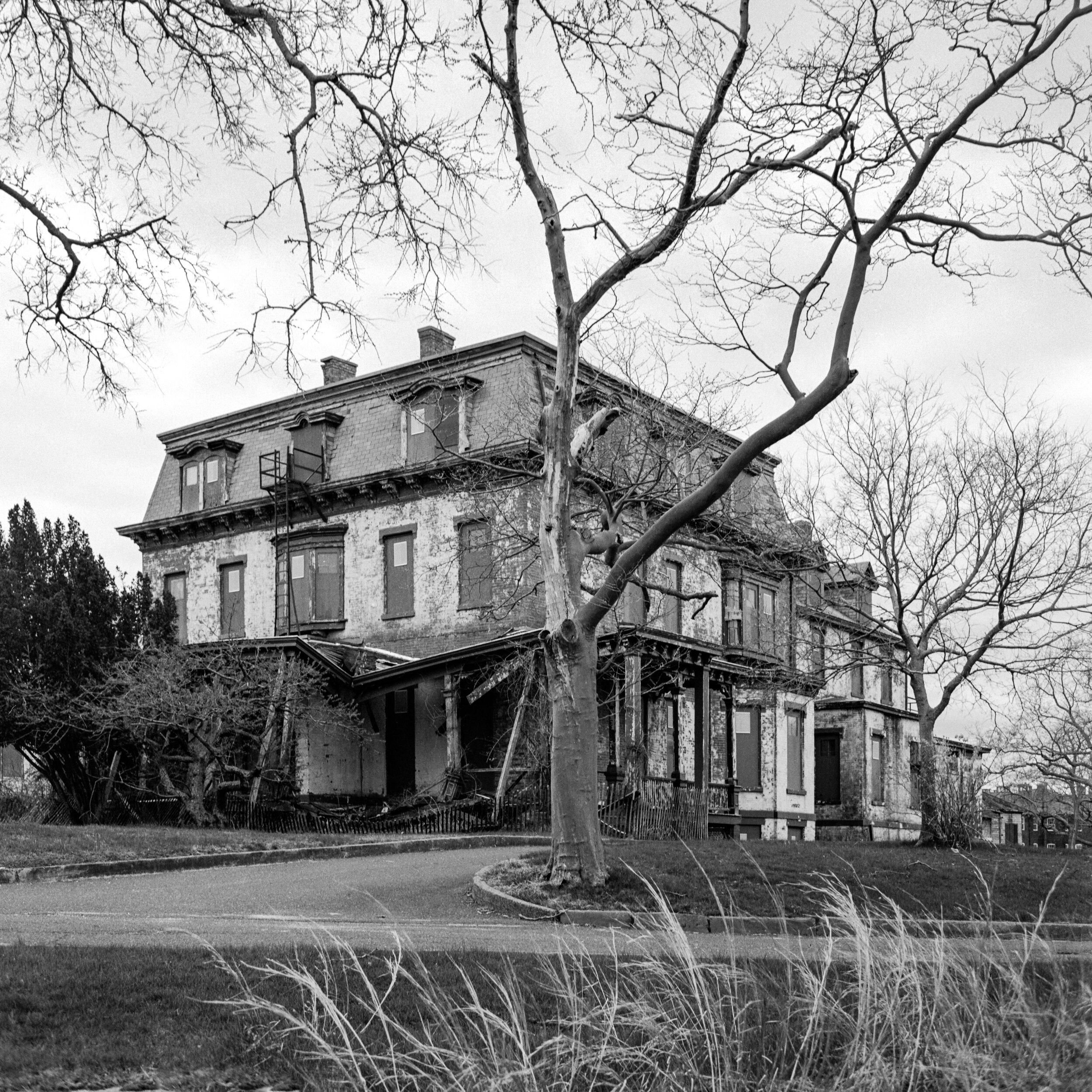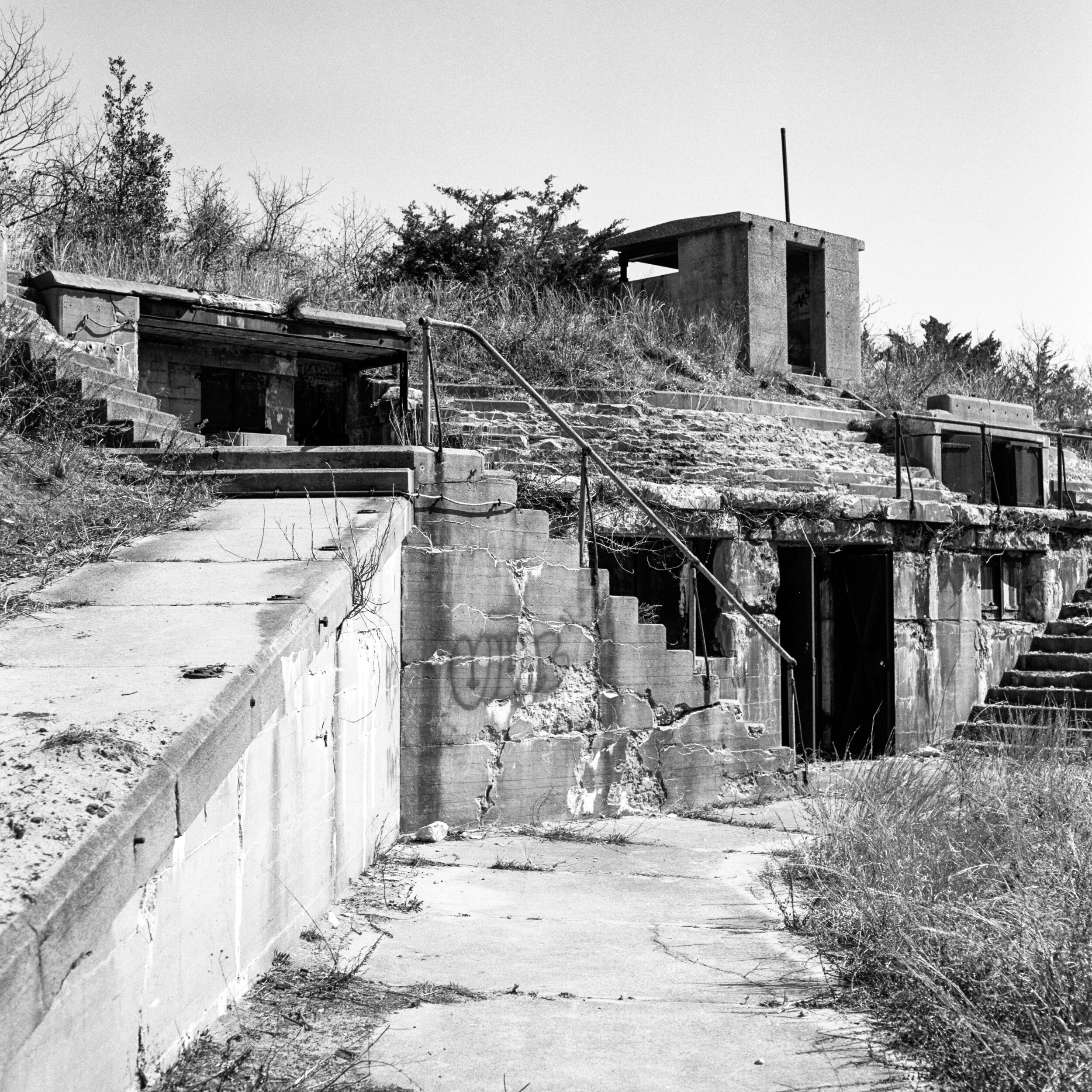Fort Hancock
Sandy Hook National Recreation Area | New Jersey
Sandy Hook National Recreation Area spans the coasts of New York and New Jersey, encompassing many ex-military installations that were critical for the protection of New York City’s harbor and the Brooklyn Navy Yard. As technology and time marched on, the need for fixed defensive instillations lessened and Sandy Hook became obsolete. Ships became less of a threat as planes took their place, and disappearing guns were replaced with rockets. Home to a proving ground, Nike missile base, and coastal artillery fortifications, Fort Hancock was built in 1857 for the US Army and remained active until the 1970s with the proving grounds closing in 1919. The former fort and proving grounds are now a part of the Sandy Hook National Recreation Area, which also includes Fort Tilden and Fort Wadsworth. A small active Coast Guard instillation is located on the far end of the peninsula. Sandy Hook Light, located in the middle of the fort, was built in 1764 to guide ships into New York harbor.
As times changed, so did the armament on Sandy Hook. Disappearing guns, which were raised to fire and “disappeared” behind concrete fortifications for reloading like those at Battery Alexander and Battery Richardson, were first installed starting in 1907. 12-inch guns on fixed carriages were added, followed by 16-inch guns around WWII. With the ever-increasing threat of air attack, large gun emplacements were cased over in concrete (although no 16-inch guns were installed at Sandy Hook). While most guns at Sandy Hook have been scrapped and the associated fortifications left to crumble, one battery of 6-inch guns remains intact.
Post-WWII, the Nike Hercules and Ajax programs replaced guns for coastal defense as the threat of shore bombardment shifted to Soviet nuclear attack. A Nike installation was constructed at Fort Hancock in 1954 and remained active until the fort’s closure. These too were eventually outmoded like the coastal defense guns that preceded them as ICBMs replaced aircraft delivered nuclear weapons. The Nike missile battery and radar control site both remain at Fort Hancock in good overall condition.
Fort Hancock functioned like a small town with a jail, commissary, gas station, and YMCA to support the thousands of troops stationed on base. The buildings original to Sandy Hook Proving Ground are constructed of deep red brick, with later buildings constructed of the signature yellow brick found throughout the fort. Officer’s Row, a collection of single-family houses for officers and their families, is a distinctive feature of Sandy Hook. I love that the buildings of Fort Hancock almost feel frozen in time, and that the National Park Service does such a good job preserving the site despite their hands being tied by limited funding.
Flooding is a constant concern on the peninsula, and some of the remaining WWII era wooden barracks were recently torn down due to flood damage sustained during Hurricane Sandy. Some of the houses on Sergeant’s Row are now seasonal homes for NPS staff. The photographs in this series were shot on 3 rolls of Tri-X 400 120 film and multiple sheets of Ilford FP4 Plus 4x5 over a few different weekend trips. Even though I’m “done” shooting at Sandy Hook, I’m sure I’ll be back in the next few years with yet another roll of film in my camera. I just can’t get enough of the history, beautiful architecture, and sprawling grounds to explore that make Sandy Hook one of my go-to shooting locations.


